In this article I will provide an informal guide for those considering lip fillers and what you should expect on a typical treatment journey.
I will also run through side effects and complications, some of which are completely normal and expected, whilst others are quite rare.
Lastly, I will try and address some of the questions commonly posed, including:
Will it hurt?
What if my lips look too big?
and,
What should I expect to pay?
I will also discuss some of the techniques that practitioners utilise, as well as revealing the most common products used.
After this you should be an expert and be fully armed with all the relevant facts. Most importantly, you should be well informed about lip-augmentation procedures. Even if you’ve had your lips treated before there should still be some useful information in the guide.
View some of our before and after cases.
Without doubt, lips are now the most popular filler treatments in the UK. A recent survey found that Liverpool was the capital of the UK.
With television programs like Love Island and social-media platforms fuelling this rise, there appears to be no downturn in growth.
For many people in the UK, the current trend for having larger lips probably started around the time The Only Way Is Essex (TOWIE) and Made in Chelsea came to our screens around 2009-2010.

Around this time, we were also introduced to Keeping up with the Kardashians, with Kim Kardashian and her half-sister Kylie Jenner now being household names both sides of the Atlantic. Kylie Jenner became particularly famous for her pout after having lip augmentation performed by renowned Beverly Hills Doctor, Simon Oura.

On Instagram, Kylie Jenner, who at the time of writing has a following of 150 million people, and her business manager mum, were quick to realise the potential of these numbers, initially by using their fame to endorse products, receiving hundreds of thousands of dollars for a single post.
Due to the fascination with Kylie Jenner and her lips, they went on to develop Kylie cosmetics, launching the Kylie lip kit (which is basically lip gloss and lip liner) – the result was the fastest selling cosmetic product in history.
Kylie Cosmetics Ltd was recently valued as a billion-dollar company!
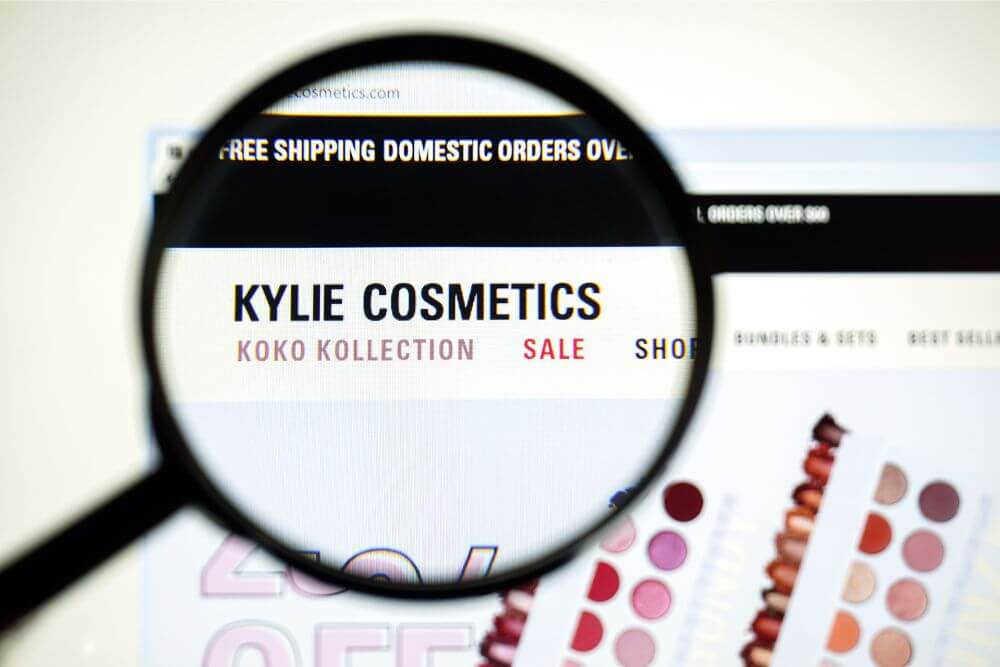
This exemplifies not only how to manipulate celebrity endorsement of products to an extreme but it also personifies our current fascination with lip augmentation amongst younger ages, with the highest search volume in the 18-24 age bracket.
But things haven’t always been this way. Those old enough to remember the Leslie Ash era, circa 1990, will recall the publicity received after her lip treatment. She had silicon-based implants placed which were over volumized, whilst also having an allergic reaction to the product. Today’s fillers are a very different product, being made of Hyaluronic Acid.
Hyaluronic acid is a naturally occurring sugar-chain molecule found in all skin and soft tissues throughout the body. Pharmaceutical companies modify these molecules to create Dermal fillers.
A further advantage with this type of dermal filler is that they can be dissolved away in cases of emergencies, complications or unsatisfactory results.
SO, WHAT ARE THE INDICATION FOR LIP TREATMENTS?
Although not a hard and fast rule, it should be remembered that young people have their lips treated to increase volume, whether naturally thin or not. Older, or more mature people, have treatment to try and restore lost volume, definition and hydration for wrinkling. Two very different reasons.
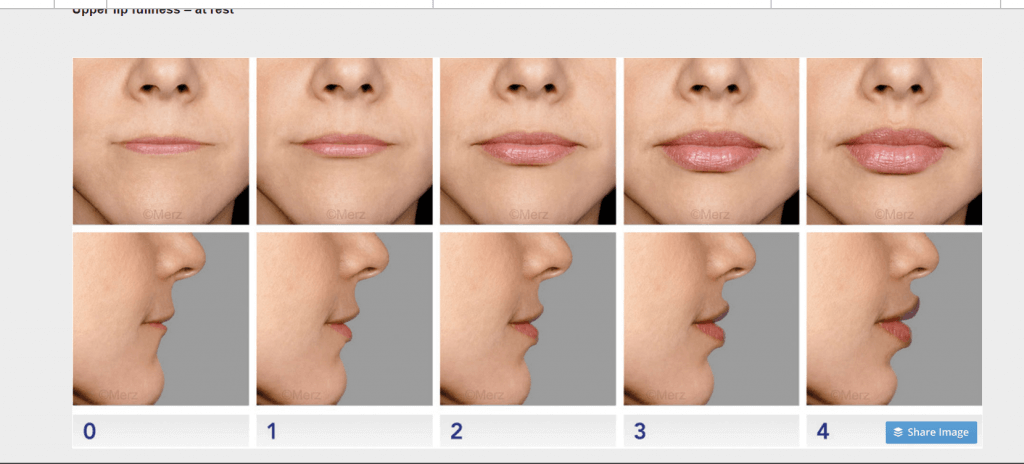
Probably the two most important points with lips are that not all lips will appear the same. Viewing the Merz scale above, it is unrealistic to expect that you could go from 0 to 4, certainly not in one sitting. Although in three or four sittings over a period it is possible, as was the case with Kylie Jenner below.
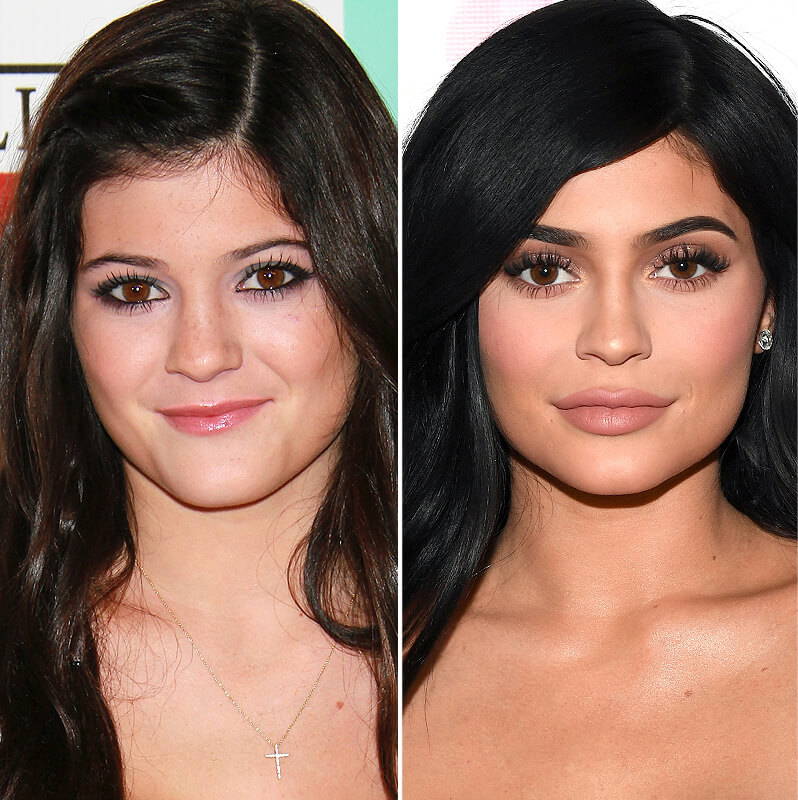
The extraordinary rise in demand for lip augmentations has resulted in an equally upward trend in those offering the services. Indeed, you only have to browse Instagram or Google to look at the vast range of practitioners. Doctors, dentists, nurses, pharmacists, chiropodists, beauty therapists, aestheticians, the list goes on…
As explained in my previous blog article ‘How to find an aesthetic practitioner’, worryingly, even those that have no medical background are increasingly offering these treatments.
In December 2019, Lauren Goodyear from TOWIE, and former girlfriend of Mark Wright, made the headlines in the Daily Mirror newspaper after completing a four-day training course with @eclipse courses. More recently, former WAG and model Danielle Lloyd also completed an introduction to Botox course, again with no prior qualifications or health care experience.
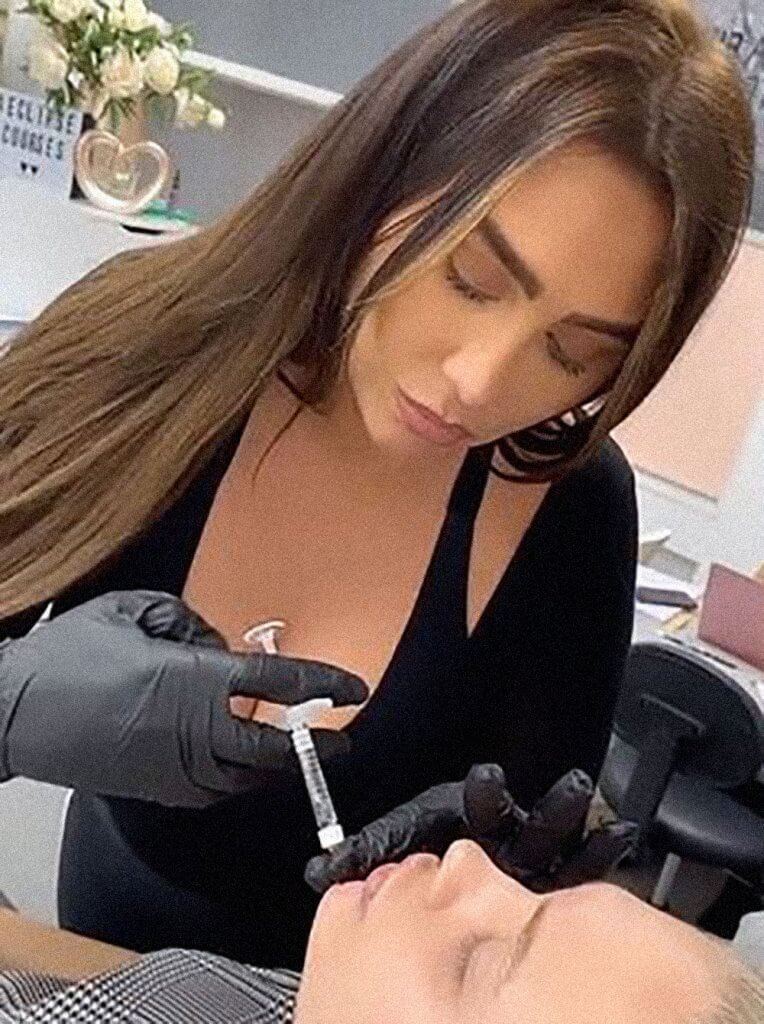
This has been met with outrage in the aesthetic community, and for very good reason – primarily on a patient safety basis.
This is far from an isolated case; cosmetic couture based in Manchester have been training lay people to administer treatments for many years.
Although these type of training providers in the aesthetic community are largely condemned, the issue isn’t with the providers but with a lack of regulation governing who can perform these treatments.
Whilst there is a lack of regulation, people will obviously exploit this grey area and see the business opportunity it offers.
However, with this increasing trend of non-medical people undertaking procedures, there has been an increasing rise in complications.
According to Save Face, 613 reported adverse filler events, 83% of all adverse events were by non-medics. Sadly, a large proportion of those people were ignored by the treating practitioner, with 6% of these going on to attend A&E. This is almost certainly something that is under-reported.
A medic, in this discussion, are those that are either Doctor, Dentist and Nurse, although even this has now expanded now to include; pharmacists and paramedics.
A non-medic is anyone else outside, including beauty therapists.
But before discussing side effects, complications and corrections, it is worth taking you through the lip-filler treatment journey.
So, what does a typical lip treatment session involve?
For first-time patients, I would break this down into three phases: the consultation visit, the treatment visit and the post-treatment period.
The Consultation Visit
First and foremost is the consultation, not only for the patient to be informed but also a chance to meet the practitioner and make sure they are comfortable with the procedure and the environment.
Even with those that have had lip treatments before, I will always go through this stage.
I run through examples of ‘before’ and ‘after’ pictures to try and gauge an idea of what the patient wants to achieve from the treatment with me.
The classic ratio of 1/3 to 2/3 is what most aesthetic practitioners are taught. However, trends do vary, and this is also dependant on ethnic variation, facial shape and patient request.
I really like the excerpt below from an Insta feed of Dr Dulce Mascarinas, a highly sought-after practitioner from the US, showing the balance of upper to lower lips.
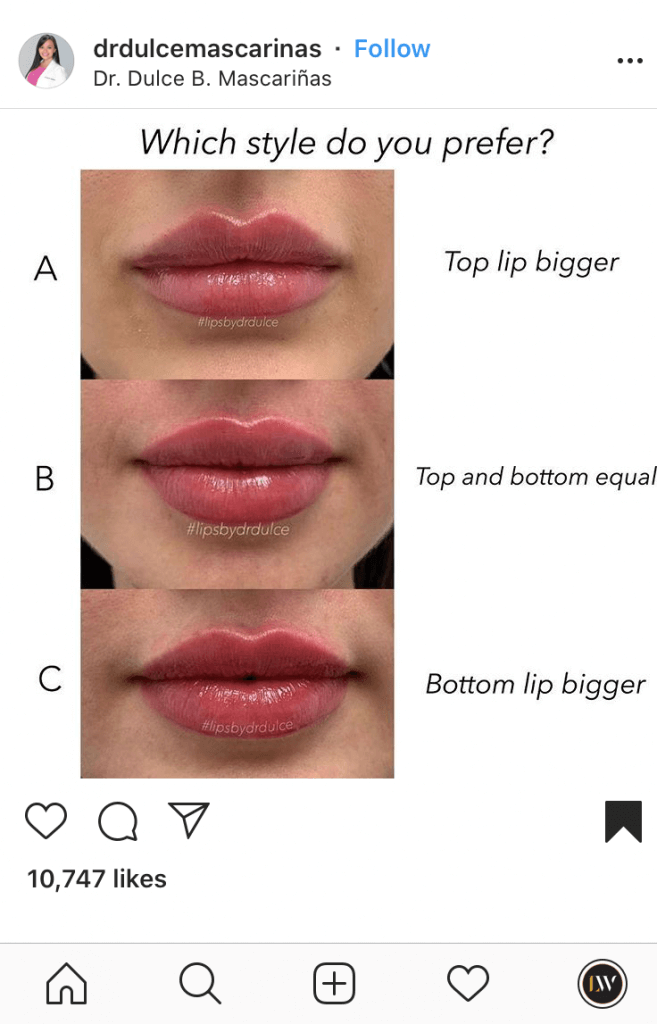
If you present this to 100 people, there would be a variation in what is preferred and why it is so important to make sure both the patient and practitioner know what the patient’s end goal is.
As well as running through the procedure itself, I discuss what products I use, what to expect, and any potential side effects or complications.
I am often amazed when new clients come to see me who have been receiving Botox and filler treatments for many years that have never had a conversation with a previous practitioner regarding potential complications. I think this is hugely unethical as it is an essential part of the consultation and would place them in an extremely vulnerable position should a complaint arise.
The Treatment Visit
There is certainly no reason why this can’t be undertaken on the same day as the consultation. However, if it is a first-time lip treatment, I would usually advise a second appointment is booked to give time to reflect on the information given.

So, you’ve had your consultation and you’ve arrived for your treatment. It is natural to be quite nervous the first time.
If nervous on treatment day I always advise my patients to have a little bit of food; certainly, don’t skip a meal as this may increase chances of fainting.
Once I’ve ran through a recap of the procedure with the client, what to expect and our desired goals, I will then ask if the patient would like their lips numbed up.
This brings us to anaesthesia.
I have some authority in this matter as my background is as a dental surgeon.
Although I personally don’t often use anaesthesia, I will give the patient the options, which are Topical or Local anaesthesia.
Topical anaesthetic: Topical creams like EMLA applied to the lips can provide a little anaesthesia. However, it needs to be left on for at least 30 minutes prior to the procedure. Some practioners would also advise covering with clingfilm to speed up the absorption rate – very messy!
In my experience I now seldom use topical anaesthesia. For the time it takes to work, I find it only offers a very modest amount of anaesthesia for the lips.
For a more profound anaesthetic effect, a local anaesthetic, like that undertaken at the dentist, can be administered. Some practitioners may not be experienced in administering local anaesthetic, but it should be offered to those that are particular nervous or have had a previous poor experience.
Even with anaesthesia, the treatment can sometimes still be felt a little. I’ve found it can be quite difficult to completely anaesthetise both top and bottom lips on some patients.
Also, lips can feel very swollen after a dental injection, and this will be the case even before your lips are injected.
If you have a sensitivity to adrenaline, then it is important to let the practitioner know in advance.
Once your lips are numb, the practitioner will be ready to start with your treatment. I will discuss techniques used in the Q&A section at the end.
Results
Treatment time is usually quick, maybe five or ten minutes. I always like to involve my patient when undertaking lip augmentation and provide them with a mirror so they can see what stage we are at.
Those having lip treatment for the first time will sometimes panic when they first see their lips, due to swelling. I always try and prepare them to expect this and not to worry. Those more experienced and who have had a few treatments under their belt are usually very happy or may ask for a slight tweak here and there, usually a little more volume.
What to expect after a lip treatment?
Expected effects:
The first few hours will typically feel a little numb and very swollen if local anaesthesia is used.
Mild to moderate swelling is expected to last around 24 to 48 hours. The more injections are made the more swelling you will experience.
Bruising can occur with any injection; this may be up to a week and will usually appear as a small blue area of discolouration.
Usually after 1-2 weeks the final effect of the augmentation will be realised.
AFTERCARE PERIOD
As most the products usually have a small amount of anaesthetic, it’s important to avoid very hot or cold food and drinks. Also be careful not to bite the lips. This is particularly relevant if you’ve had a dental block.
I also advise to avoid lip balms for a few days at least. If the lips need a barrier then Vaseline alone will work perfectly fine.
As described above, how the lips appear in the first 24 hours or so are not how they will look a week later.
I will offer first-time clients a review appointment in a couple of weeks. I will also provide my direct contact number so if there are any concerns then not to hesitate to get in touch, aften just for reassurance.
If further treatment is planned to increase volume over a staged approach then I would perform this no sooner than four weeks later to give the lips adequate time to settle, and the same process would be repeated.
The duration of effect can also vary greatly from person to person. Most cases would typically be expected to last around 6 months, but this can vary and tends to be a gradual reduction in volume.
So now we’ve described some of the after effects that are quite common and expected, are there complications that you needed to be aware of?
In a word, YES.
Complications are a fact of life although, thankfully, they are relatively uncommon considering the number of procedures undertaken.
In my opinion, this is certainly under-reported, often out of embarrassment or fear. I would urge anyone who has an issue to return to your practitioner.
If you have been ignored by the treating practitioner, I would strongly suggest you report this to an organisation like SAVEFACE.
Contact ACE Group, Aesthetics Complications Expert Group, for advice and they will be able to put you in contact with a local practitioner who has experience in dealing with complications.
So, what are the adverse events that can occur?
The most severe of all of these is what’s called a vascular occlusion/compression, a very serious complication in which filler product is inadvertently injected into a blood vessel or compresses a vessel. This can result in severe pain, and if left untreated, can result in skin and/or mucosal tissue death as a result of lack of oxygen supply to that tissue.
There is a very clear pathway of care for those people if this occurs, involving:
- A filler-dissolving product injected into the area
- Vigorous massage
- Aspirin to thin the blood
- Monitoring and, if appropriate, referral to a more experienced practitioner.
Thankfully, if this pathway is followed, then most cases can usually always be reversed leaving just a rather large area of bruising.
Other complications can include, but are not exclusive to:
– Acute inflammatory allergic reaction
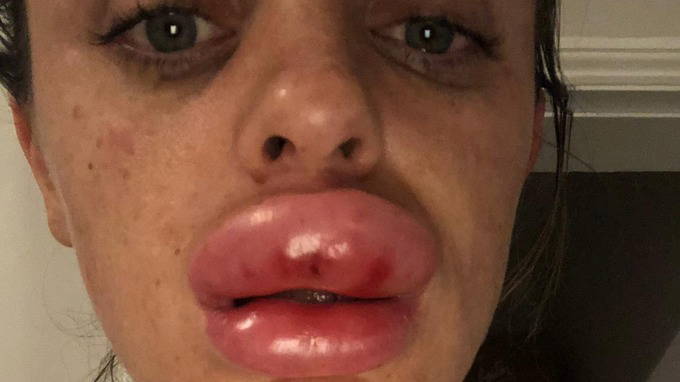
This type of rare reaction is difficult to predict; it can result from too much filler but could happen with any type of filler. However, in my opinion, it is a reason not to have cheap generic filler placed.
What is more important is how to manage such an occurrence. Dependant on severity, initially this should be managed with antihistamines and a short course or oral steroids.
In severe cases there may be an indication to administer adrenaline, however, this should be reserved for more of a true anaphylactic (allergic) reaction.
With any allergic type of reaction the most important consideration is speed of onset. Something in the first five minutes is classed as severe and that person needs to be managed closely, over a period of 24 hours, and will almost certainly require urgent referral to hospital for monitoring.
– Haematoma; a severe type of bruising
– Infection; cross infection control is very important to minimise this risk.
All serious stuff and absolutely the reason why only medical professionals should be performing these treatments.
Other less serious complications include:
– Mucocele: Can appear as a small bruise but usually clear and often caused by trauma from previous lip injections
– Lumps (nodules)
– Product migration: This is where product is placed inadvertently in the wrong place resulting in a thickening of the skin, typically above the upper lip. This is not to be confused with localised swelling that will invariably occur for around 24-48 hours after the lips are injected, before subsiding.
I always explain these risk to my patients. If you have had lip treatment before and this hasn’t been discussed, please ask your practitioner the question how they would manage such an occurrence.
So how can lip fillers be corrected?
As described above, part of every practitioner’s armamentarium should be a medicine that dissolves filler product away after injected and the same product can be used in lower doses to dissolve away undesirable results.
All Practitioners administering fillers should have experience or at least knowledge of how to dissolve product away.
In my clinic, if we are trying to correct a treatment, it is important to try and dissolve as much of the product as possible. It is very typical that people don’t know which product was used and if we can avoid mixing different fillers together it would reduce the risk of further complications.
The patient may be happy just with this. If further enhancement is required, I would typically wait between two and four weeks after.
Below is a typical case; we needed two sessions of dissolving followed by a third session to augment
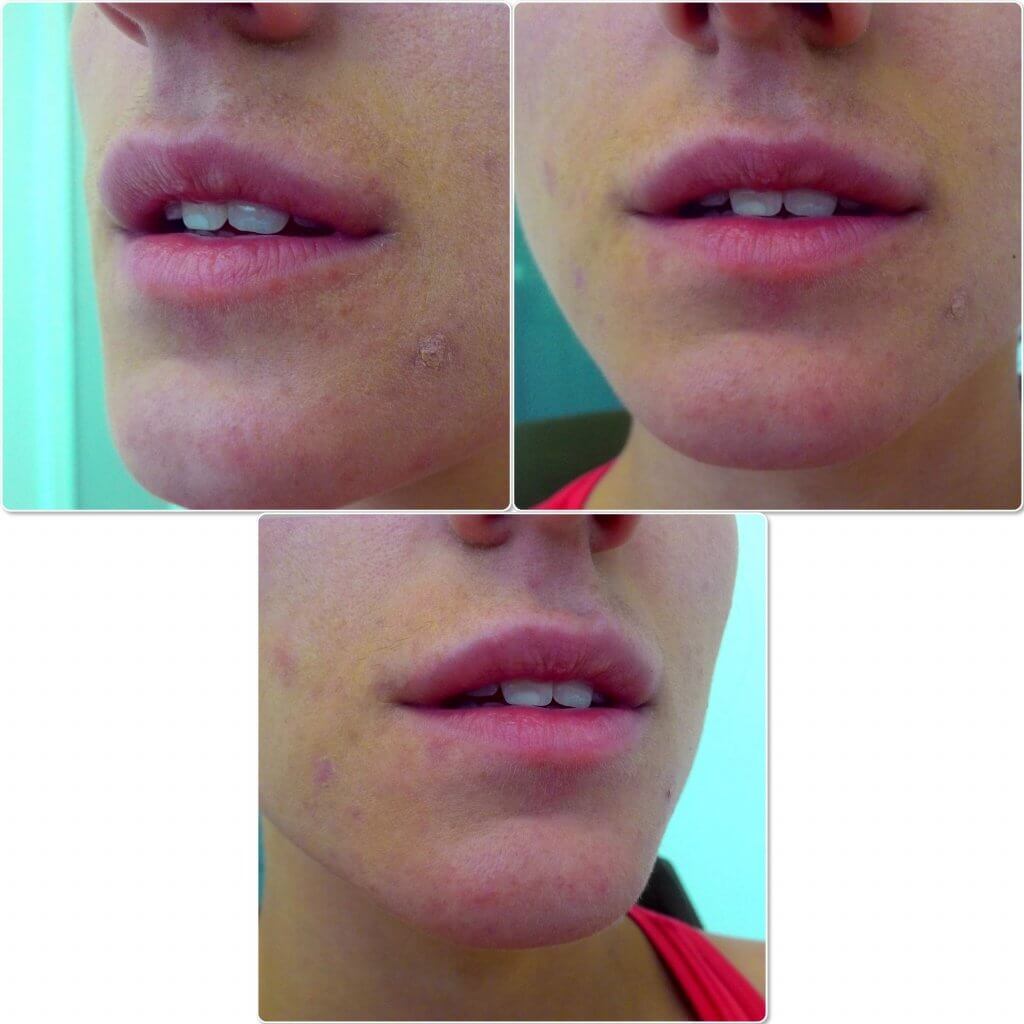
We can see on the above image that the upper lip is out of proportion with the lower lip when the mouth is open.
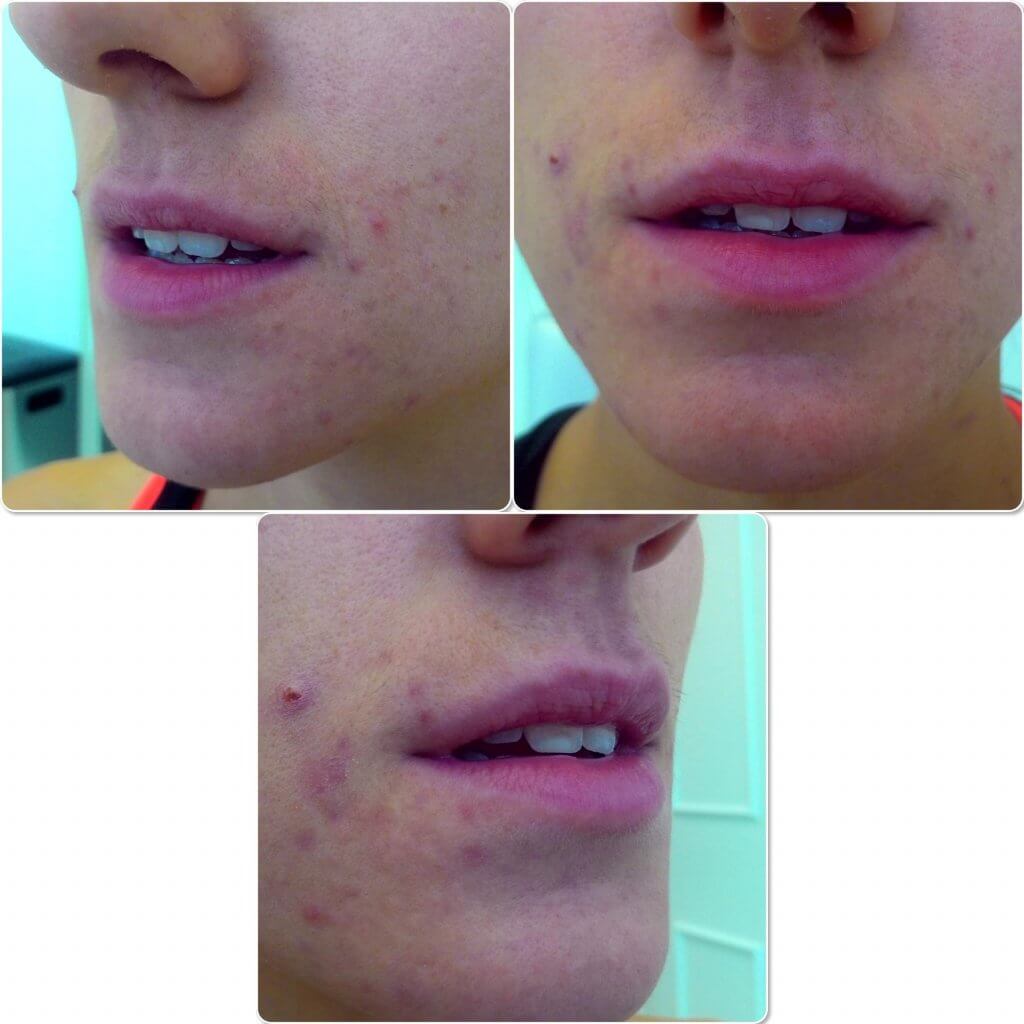
Image above after a session of dissolving. We can see that the lip balance looks far better and more in proportion
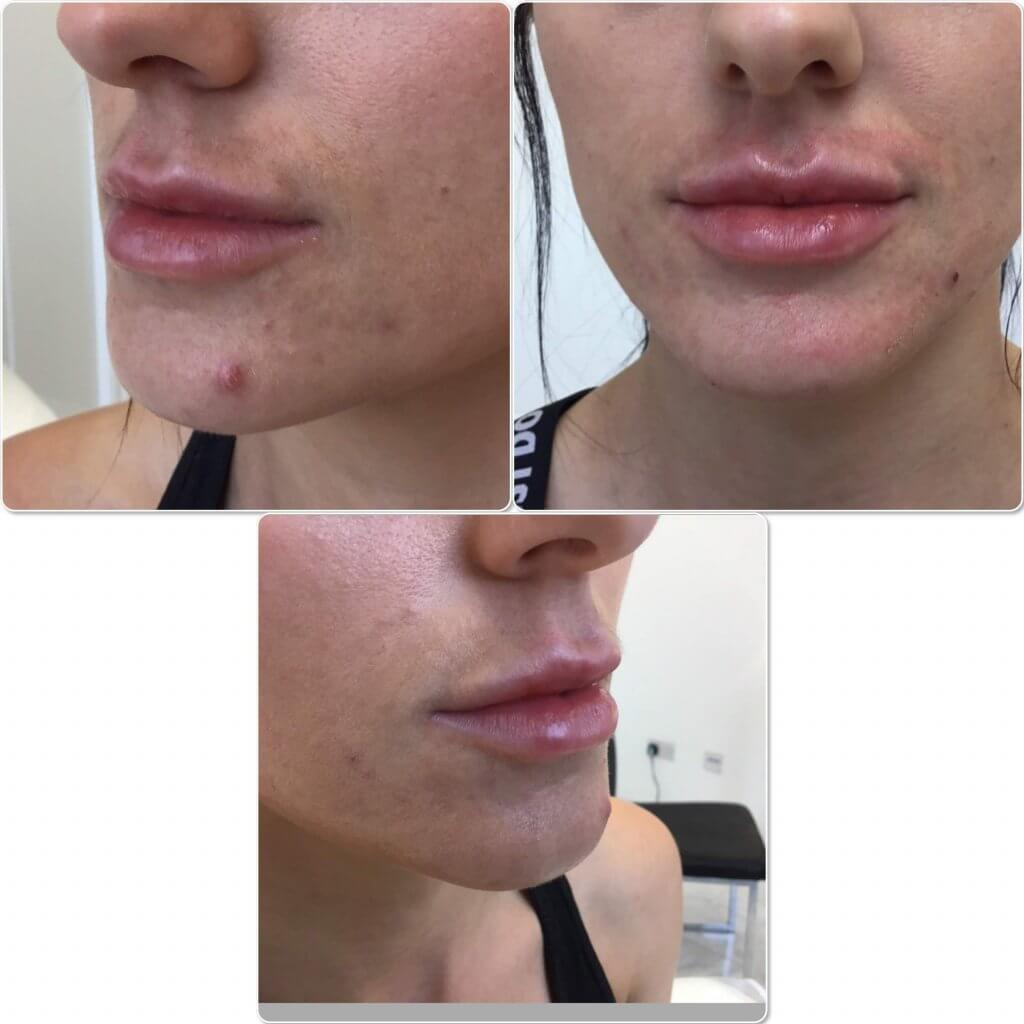
Final image, immediately after augmenting. As is common with younger clients, a fuller lip treatment was requested.
Lips, for many people, are viewed as a symbol of sensuality, a highly tactile, sensitive and erogenous organ and the part of the face that the eyes are drawn to. It is human nature to want to enhance this as is performed with lipstick, and whilst this can be enhanced even further and relatively easily with fillers, far from being a fashion trend, lip augmentations are here to stay.
If you’ve made it this far through the post, well done!
I’ve included a Q&A section after this which should provide answers to the most common questions I receive. If there are any questions you’d like to ask further then please don’t hesitate to get in touch.
Warm regards
Lee Whittle
Common Questions: Most of these are natural concerns people have, particularly before having a treatment for the first time. Once you’ve had your lips treated you will have an idea of what to expect and the degree of swelling to anticipate.
Will it hurt?
I’m sorry to say but yes there will be a degree of discomfort during the procure. This will vary dependent upon:
1) each person
2) technique used
3) practitioner experience
4) anaesthetic used.
Generally, the procedure should be reasonably quick and is usually very well tolerated.
I’m worried about my lips looking too big.
As described above you must expect your lips to swell for at least 24-48 hours, so please don’t have any important social engagements or events. I’ve lost count of the number of patients that have attended for lip treatments only to reveal they are going on a night out or a birthday celebration the following night!
Particularly if it’s your first lip treatment don’t do it; you will be so conscious.
Also, with first-time treatment I will generally err on the side of caution and under-correct. Although I obviously want to avoid a disappointing result, I am far happier as a practitioner to add additional product if required.
What if I don’t like the look?
Don’t panic, unless there is something that is obviously wrong, little lumps and bumps can happen, they are usually easy to massage and often will reduce themselves. Things will often take around a week to fully settle so try and wait this period.
Although always a last resort, as explained above, if you are unhappy, the filler product can always be dissolved away.
So, what if things do go wrong?
This very much depends on the individual case. Is it a complication or an unsatisfactory result?
The most important point is to be in communication with and if necessary, return to, your treating practitioner.
What products are used for lips and is there a difference?
All practitioners have preferred products and of the main brands listed I would say none is vastly superior to another. Each range has specific indications but will have properties unique to lips.
Juvéderm; Ultra-range such as Juvéderm smile, 2 and 3
Also has a Vycross range such as Volift, Volume and Volight which is classed as a premium Juvéderm range and is the most expensive. This is a lovely product to work with but has been known in the industry for some time to potentially have an increased incidence of delayed inflammatory reactions.
Restylane: Defyne
Belotero: Kiss
Emervel
Teosyal: my preferred product for the majority of lip augmentation, RHA 2. The RHA range is the only brand to achieve FDA approval for three products simultaneously.
Revolax: cheaper more generic product, lots of practitioners use this to offer cheaper treatments.
In my own experience, and speaking with fellow practitioners, there are issues with both cheaper products like Revolax and the most expensive products Vycross.
I’ve heard of lips being treated with cannulas. What are they and do they help reduce discomfort?
Cannulas, or micro cannulas are essentially blunt ended needles. They have an extrusion hole near to the tip rather than at the very tip. This allows the very end to be rounded allowing access in treatment areas that potentially are more at risk of complications. They also reduce the risk of traumatising the important structures in certain treatment areas as it doesn’t have a sharp tip like a needle. This also is thought to reduce discomfort.
I have found that pain levels in part depend on technique, position and depth of cannula and the lip anatomy itself. Although for some people it undoubtedly improves the experience, I’ve had numerous patients a find cannula as painful, if not more, than a needle alone.
Most practitioners will use a needle when undertaking lips augmentation procedures, primarily as they allow more accuracy, however, there are certainly some indications to use microcannulas.
What techniques do practitioners use?
Practitioners will utilise lots of different techniques to achieve an end goal.
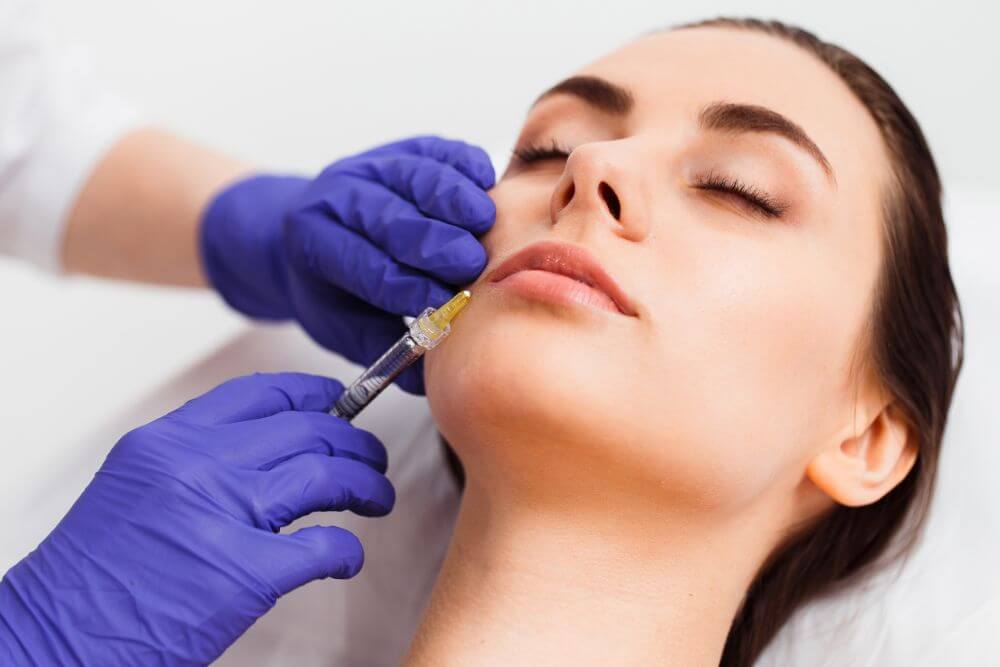
-Tenting, vertical fanning, threading
-Classic horizontal fanning, linear threading
-4mm technique
-Cannula Technique
-Combination approach.
Practitioners, through many years of treating, will invariably stick with a technique they were taught and then maybe start to encompass other styles as they gain experience.
Regardless of technique, the most important aspect is patient safety and treatment outcome. As discussed in a previous blog post, the rise of non-medical persons performing these procedures is alarming. First and foremost, only those with a medical background should be undertaking these procedures.
At the moment we are in the Wild West with very little regulation. In my opinion, even if non-medical persons are taught how to handle complications, this should not give permission to every person being able to offer the procedures. Unfortunately, this is not the case; any person in the land can attend a course as a lay-person and start practicing as an aesthetician, potentially within a few days.
What should I expect to pay?
This will obviously vary on factors such as:
Product used
Clinic location
Experience of the practitioner.
Prices can range from as little as £70 to as much as £399.
I’m often amazed how clinics on Instagram and Facebook can offer lip fillers for under £100, unless of course it is cheap filler being used, as this doesn’t cover the cost of the product. It may also suggest that unused product in syringes is being re-used as well as that person being a non-medic.
ALWAYS MAKE SURE YOU SEE THAT THE BOX AND PACK BEING USED IS UNOPENED!
However, I completely understand that not everyone can budget for more expensive treatments and where there is demand often will come supply. If you ask about the points posed in this blog and are comfortable with the practitioner and your expectations are addressed, then you can’t do any more than place your faith in that practitioner.


